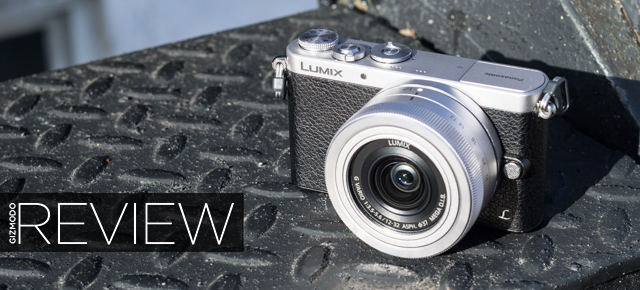When Panasonic introduced the Lumix GM1 late last year, it was met with equal parts confusion and wonder. Is it really a good idea to pair such a tiny size with interchangeable lenses? To be honest, we’re still not quite sure.
What Is It?
A $999 (Australian RRP) mirrorless camera with a 16-megapixel micro four-thirds size sensor. The GM1 has, for the most part, the same specs as its big brother, the Lumix GX7. It shoots the same photos, and the same video. But it’s smaller! Much smaller, and comes with an equally small 12-32mm (that’s the equivalent of 24-64mm on a full-frame camera) f/3.5-5.6 collapsible kit lens.
Why Does It Matter?
Historically, compact cameras have featured fixed lenses (your classic point and shoot), and companies have been reluctant to try creating a super-small interchangeable lens setup with high-end guts. There’s just no clear audience for combining tiny and high-end. The GM1 is Panasonic’s search party for a new kind of market.
Design
Small doesn’t have to equal cutesy, and the GM1 presents simple, straight lines across a faux-leather front and magnesium-alloy shell. It comes in silver and black, all black, or a sort of rusty orange and silver. It’s a more dignified set of colour schemes than the candy or pastel hues of other small camera makers.
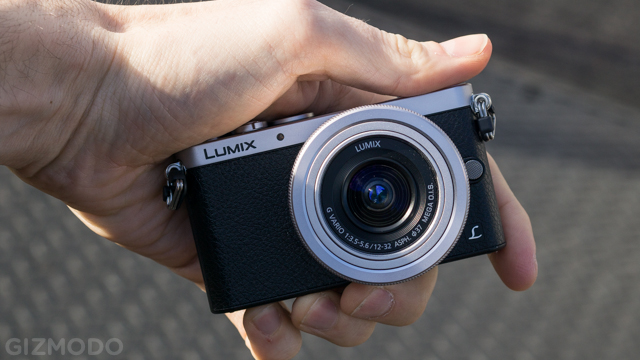

The control layout is decent considering the lack of real estate the body provides. Up top is a mode dial, shutter button, and focus mode switch surrounding a customisable function button. There is also a popup flash. On the back is your standard thumb-wheel with directional buttons, review, video record, trash, and display buttons. The thumb-wheel isn’t the most comfortable to turn, but all the buttons have a good action and were easy to press. I do wish there was an upper control wheel, where your thumb naturally rests, but overall it is an economical use of limited space.
Using It
Tucked away in the small body of the GM1 is an extremely capable set of image-making components that deliver crisp and beautiful shots. The quality matches the more expensive and larger, Panasonic GX7, which is among the best micro four-thirds cameras available. These accolades must all be understood in the context of the micro four-thirds system. Certainly larger sensor cameras will perform better, such as Fuji’s X series or Sony’s Alpha series (formerly known as NEX), which both have APS-C size sensors or above. Video quality is also excellent on the GM1, and records up to 60p in full HD, and outshining most other mirrorless cameras.
All our sample images were all shot RAW and converted to JPG in Adobe Lightroom.

19mm @ 1/125 f/14 ISO 200

32mm @ 1/400 f/5.6 ISO 800

12mm @ 1/125 f/3.5 ISO 3200

32mm @ 1/250 f/8 ISO 200

32mm @ 1/250 f/5.6 ISO 200

full-resolution crop

32mm @ 1/640 f/11 ISO 200

32mm @ 1/320 f/5.6 ISO 800

21mm @ 1/80 f/4.7 ISO 3200

Full-resolution crop
But while image quality is good, it’s also on par with most top-shelf mirrorless systems today. What’s more important here are feel, control and usability.
The GM1 is frustrating to control at first. Its capacitive touch-screen compensates for lack of physical dials, but the interface is confusing. There is a sidebar loaded with functions that are too small for normal fingers, and it is often unclear just how to navigate it. The touchscreen itself works great, and includes thoughtful features like choosing an autofocus point with your finger. But the GM1’s UI, while very customisable, needs a bit more refinement to qualify as “easy to use.”
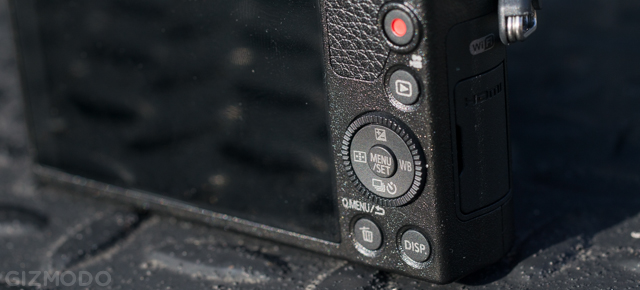
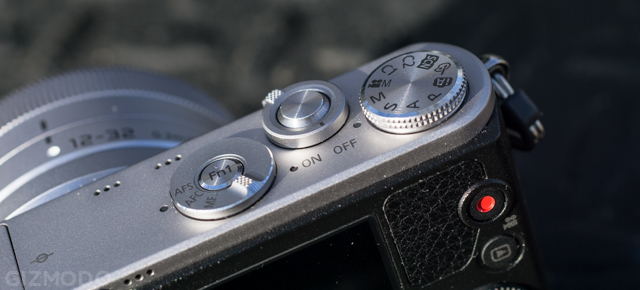
The GM1 relies on an electronic shutter, which allows for crazy speeds of up to 1/16,000 of a second and allows for completely silent shooting. This makes for a great ultra-discreet shooting experience, and being able to palm the camera and shoot from arm’s length is a great way to get shots that would be too difficult or uncomfortable with a larger camera.
Autofocus is super fast. Less great, though, is using the touchscreen to manually focus. The kit lens has no focus ring, so what you are left with is a digital “lever” which is impossible to control with any kind of speed or accuracy. Most other lenses have lens rings, so pop one of those on and you’re golden.
Oh, yes, other lenses, the whole point of investing in a system like the GM1! Here is where things get weird. Virtually any lens besides the kit negates the compactness of this camera vanish. Aside from a pancake prime or two, most other lenses on the GM1 make for an unbalanced, cumbersome feel. Sure, the kit lens is a decent performer. It’s got nice optical image stabilisation and a versatile zoom range. But if that’s the only lens that maintains the compact integrity of the GM1, why not make it built-in for an even slimmer profile and possibly even a better aperture range? Even with the kit lens, the GM1 won’t fit in your pants pocket. The utility of small size plus interchangeable lenses is an illusion, because it’s only small with one lens.
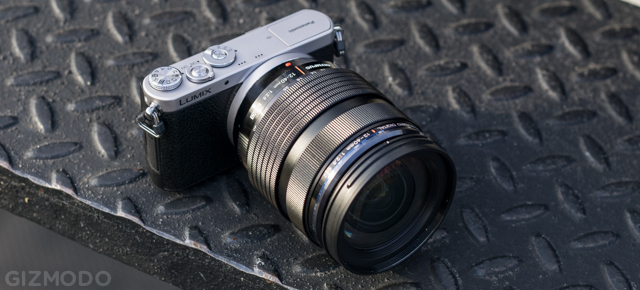
Like
Terrific still and video quality in such a small package make the GM1 a freak of nature that lures you in. It’s got just the right aesthetic, and is well-built. The kit lens is actually not bad, aided by image stabilisation, a close focus distance, and small size. The camera overall is very fast, and the size coupled with an electronic shutter is a super stealth combo.
No Like
Touch-screen controls are difficult to navigate and will take some getting used to. The conflict between small size and large lenses sort of defeats the purpose of the camera unless you stick to the kit lens. Battery life is not great, and price is pretty high at $999.
Should You Buy It?
What does ‘compact’ mean to you? If it means pocketable, this isn’t the right camera. Go with a Sony RX100 II, or for the best image quality, a Ricoh GR or Nikon A. And if you don’t care so much about sticking it in your pocket, you need to seriously look into larger cameras that are worlds more user-friendly. And at $999, it certainly isn’t price that will attract you to the GM1. For me, the ideal version of this camera would be one with a fixed, high-quality zoom lens that retracted completely and fit in a pants pocket.
That’s not to say that there is a very specific kind of shooter out there who seeks just the kind of stealth handling and large-ish sensor benefits of the GM1. It’s no doubt a fun camera to have in your hand and packs great image quality. But if you are just getting started, or seeking a great all-around experience, maybe it’s not right for you.
